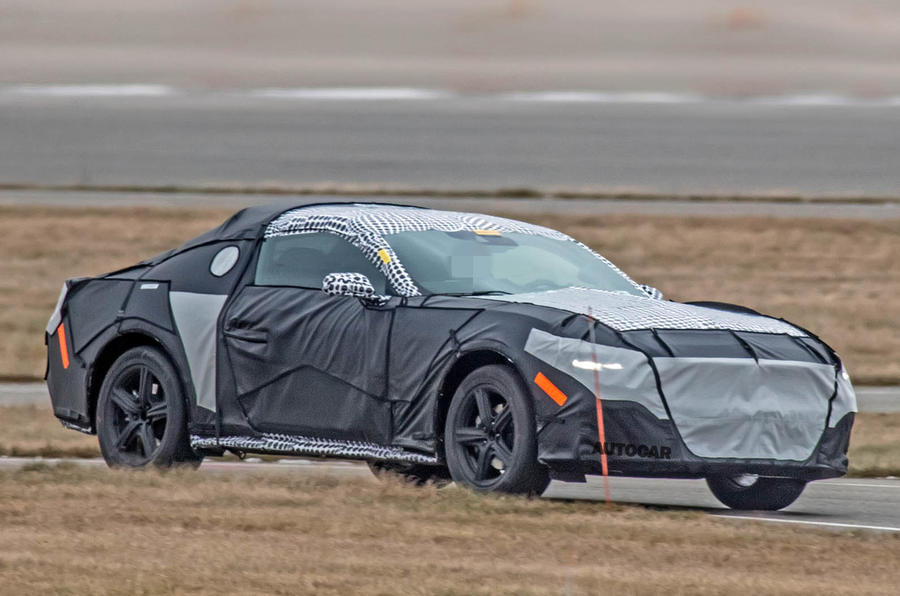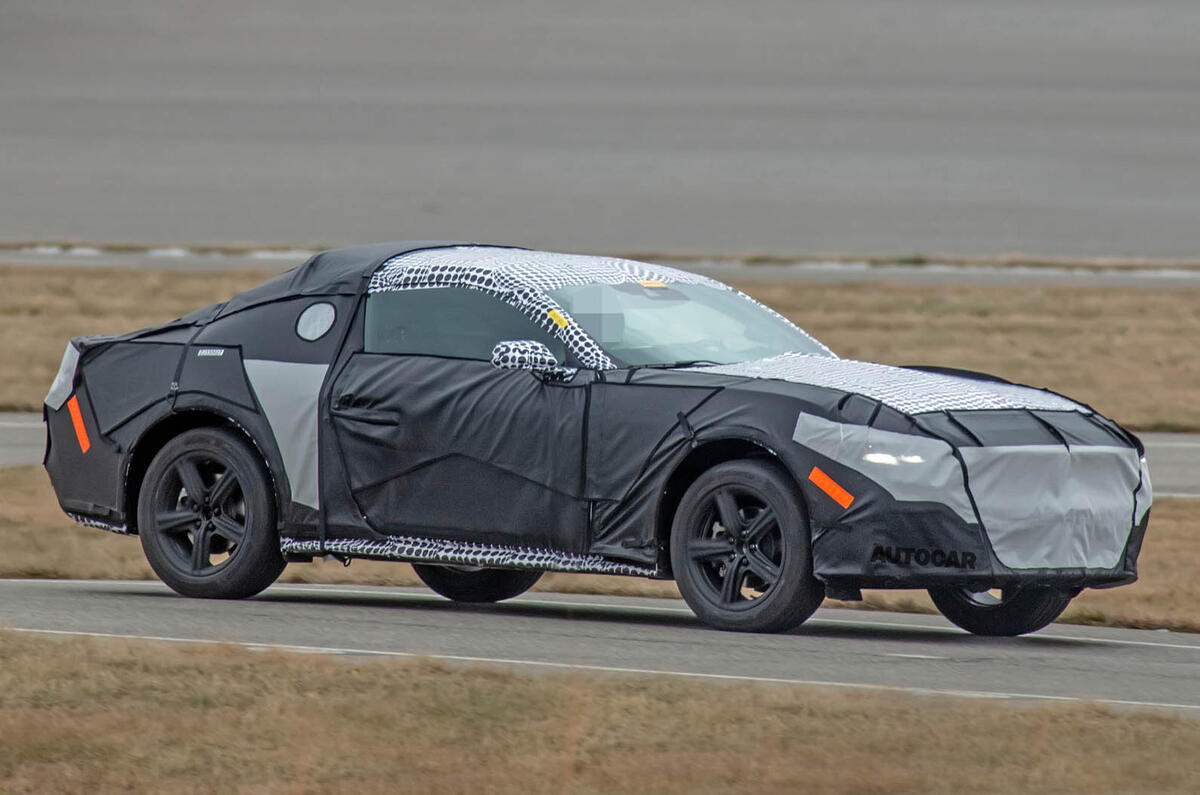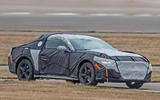The seventh-generation of the iconic Ford Mustang will be unveiled next week, and is set to undergo the most radical reinvention in its 58-year history.
The sports coupé, which wears one of the longest-running (and historically best-selling) nameplates of any car currently on sale, will be shown for the first time at the North American International Auto Show in Detroit on 14 September.
Seen before as a camouflage-clad prototype, it’s clear that Ford will seek to evolve, rather than overhaul, the Mustang’s characteristic cab-backward silhouette and muscular design cues.
Visible details include new lights at the front and rear and a sharper front grille, but it will be the changes underneath the skin that most tangibly differentiate the Mk7 Mustang from its predecessor.
As previously reported by Autocar, Ford is expected to bring the Mustang into the electrified era with a new petrol-electric drivetrain centred around its trademark V8 petrol engine.
To be sold alongside the new all-electric Ford Mustang Mach-E SUV, the S650-generation Mustang is expected to retain the current car’s 5.0-litre naturally aspirated Coyote V8, but this time with a pair of electric motors installed for reduced emissions, increased power and zero-emissions running capability.
The new drivetrain layout was alluded to in patent filings in 2017, when launching a hybrid Mustang was a higher priority for Ford than the all-electric Mach-E.
Essentially, the Mustang is set to become four-wheel-drive, with the rear axle powered by the V8 and the two electric motors used to drive the front wheels – either independently in EV mode or alongside the petrol motor in dynamic driving situations.
According to the patent, each of the motors would drive its own wheel through a respective reduction gearbox, forming part of a four-wheel-drive system that would “increase wheel traction with a ground surface on which the vehicle sits to increase acceleration and decrease wheel slippage”.
7th-Gen in 7 days. @FordMustang #MustangStampede pic.twitter.com/mwSHgNzBWL
— Jim Farley (@jimfarley98) September 7, 2022
The 'pancake' motors in this scenario wouldn't be "rotationally coupled to the engine", according to the patent filing.




































Join the debate
Add your comment
Until someone comes up with a power source that's has parity with ICE powered Cars, we are going to have Tax Dodgers ( not my words) like the Mustang, they can't defy gravity, so they are it for now.
With added batteries, better get the current model before it becomes an overweight tax dodger special.
Camouflage does its job, I'll be surprised if it is vastly different looking,and Ford are only joining the Herd to have Phev and EV Cars on sale.
Hardly joining the herd when the electric propulsion will be required for the car to be competitive tax wise and look affordable mpg wise to be sold in alot of markets. Will also help reduce Ford's average CO2 figure in certain markets which could be the difference between them being able to actually sell the car or not in certain places.